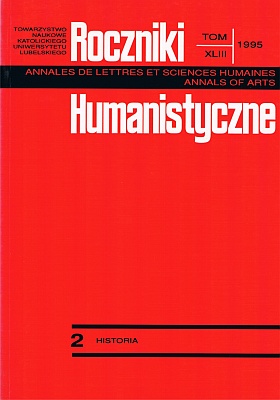The Hungarian Uprising of 1956 According to British Weekly Magazines „The Tablet” and „The Economist”
Abstract
The Hungarian Uprising of 1956, brutally crushed by the Soviet army, focussed the attention of the world, especially of the countries of Western Europe.
The military intervention conducted in Egypt by British, French and Israeli troops made it easier for the Soviets to justify their behavior in Hungary. This connection between the two crises caused the particular interest of the British public in the Hungarian developments. It was expressed in the press, particularly in the weeklies. This fact has been largely neglected in studies concerning the Hungarian Uprising and its implications abroad.
For the purpose of this article two British weeklies were chosen. The first one is „The Tablet”, representing a catholic, conservative point of view, the other one is „The Economist”, one of the most influential conservative British periodicals.
Both papers expressed their support for the Uprising and, originally did not foresee the possibility of a Soviet invasion. After the creation of the Kadar regime both papers expressed their doubts about its prospects for success.
The religious aspect of the uprising is usually reduced to references to Cardinal József Mindszenty. „The Tablet” presented a wide spectrum of information and commentaries not only about the Cardinal and the Hungarian clergy but also on such topics as the reactions of the Holy See and the international Catholic relief actions.„The Tablet” devoted its attention to comparing the religious aspects of the crises in Hungary and Poland.
„The Economist” concentrated its attention on the international implications of the Hungarian Uprising. It linked the events in Hungary not only with the Suez Canal crisis but also with the political situation in places such as Northern Ireland, Iceland or India.
Copyright (c) 1995 Roczniki Humanistyczne

This work is licensed under a Creative Commons Attribution-NonCommercial-NoDerivatives 4.0 International License.





